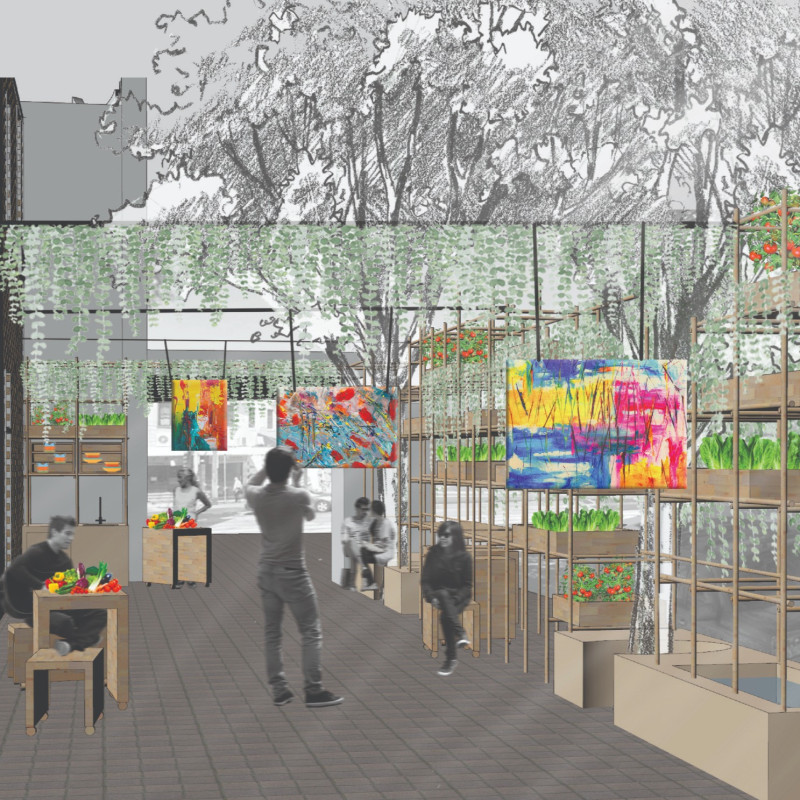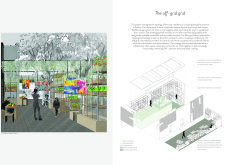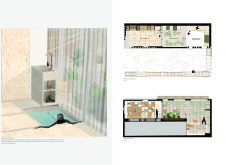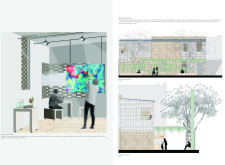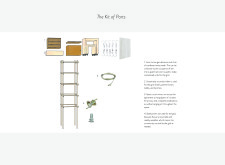5 key facts about this project
At its essence, the architecture serves as both residential and studio space, allowing the couple to engage in their artistic endeavors from the comfort of home. This hybrid function is central to the design philosophy, which emphasizes the seamless blend of workspace and living areas. The spatial arrangement is carefully curated to support productivity while offering a comfortable home life.
Key elements of the project include the innovative use of a “grid wall” that enables modular configurations. This grid provides both structural integrity and an adaptive framework, giving residents the option to personalize their spaces according to their evolving needs. It presents an opportunity for maximizing usability in a compact area, thereby allowing creativity to flourish within the designed environment.
The materiality of the project also plays a significant role in its identity. The use of locally sourced timber throughout celebrates natural aesthetics while aligning with environmental principles. Materials such as perforated brick not only enhance the façade's visual appeal but also contribute to passive ventilation, ensuring a comfortable indoor climate. The inclusion of solar panels signifies the commitment to renewable energy, further underscoring the architecture's sustainability.
Incorporating distinctive communal spaces is another essential aspect of the design. Shared kitchens and gardens promote interaction among residents, fostering a sense of community that extends beyond the individual units. These areas are purposefully designed to accommodate shared activities and gatherings, encouraging collaboration and a communal spirit. The rooftop garden stands out as an inviting space for residents to connect with nature and each other, enhancing the urban experience.
Integration of additional features such as grey water filtration systems and raised gardens reflects a comprehensive approach to sustainable living. This architectural intervention acknowledges the ecological importance of resource management within urban settings, providing practical solutions for water conservation and enhancing biodiversity.
The overall design invites exploration and encourages residents to engage with their surroundings. Circulation paths are intuitively planned, guiding occupants through a variety of spaces that offer different experiences and opportunities for engagement, whether solitary or communal. The presence of colorful art installations throughout the project enriches the sensory experience, signaling a celebration of creativity inherent in both architecture and artistic expression.
This architectural project stands as an example of how urban living can adapt to modern needs while prioritizing sustainability and community. Its unique design approaches reflect an intention to create an environment that nurtures creativity and fosters interaction among residents, making it a valuable addition to the Sydney landscape.
For those interested in delving deeper into the specific design elements, it is encouraged to explore the architectural plans, architectural sections, and architectural designs that underpin this project. By examining these aspects, readers can gain a broader understanding of the innovative ideas and methods employed in this thoughtful architectural undertaking.


